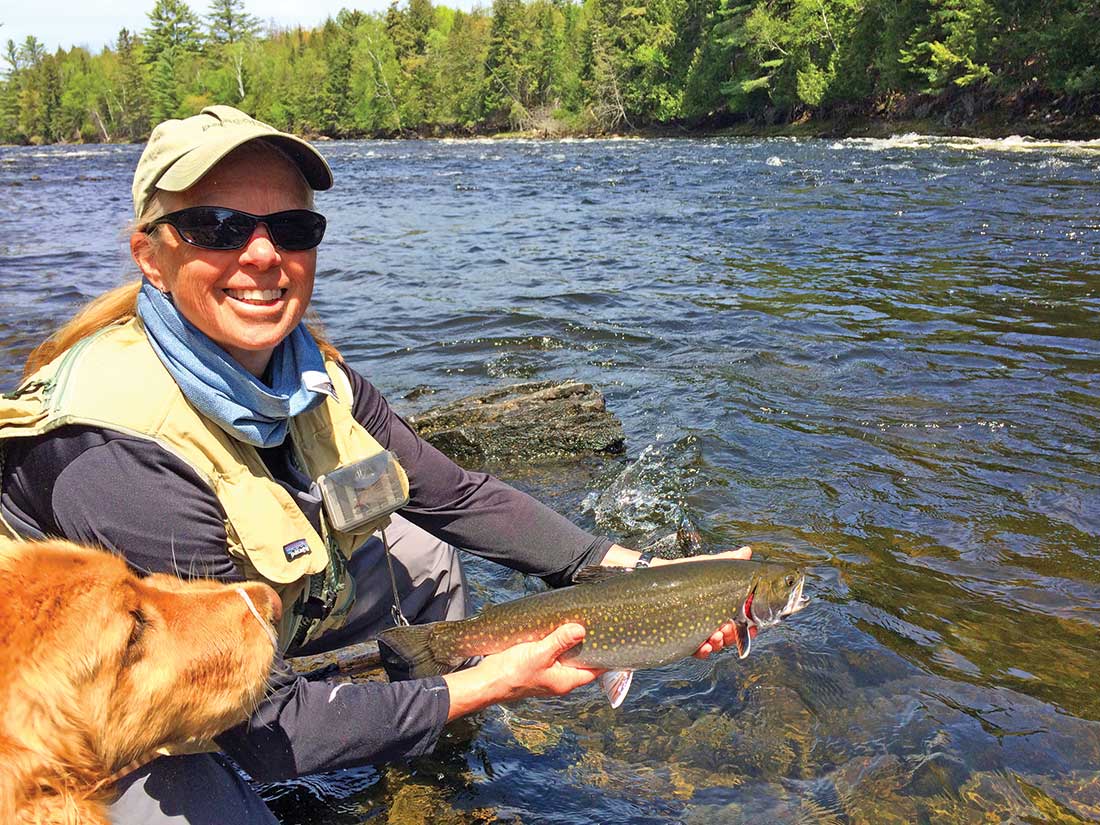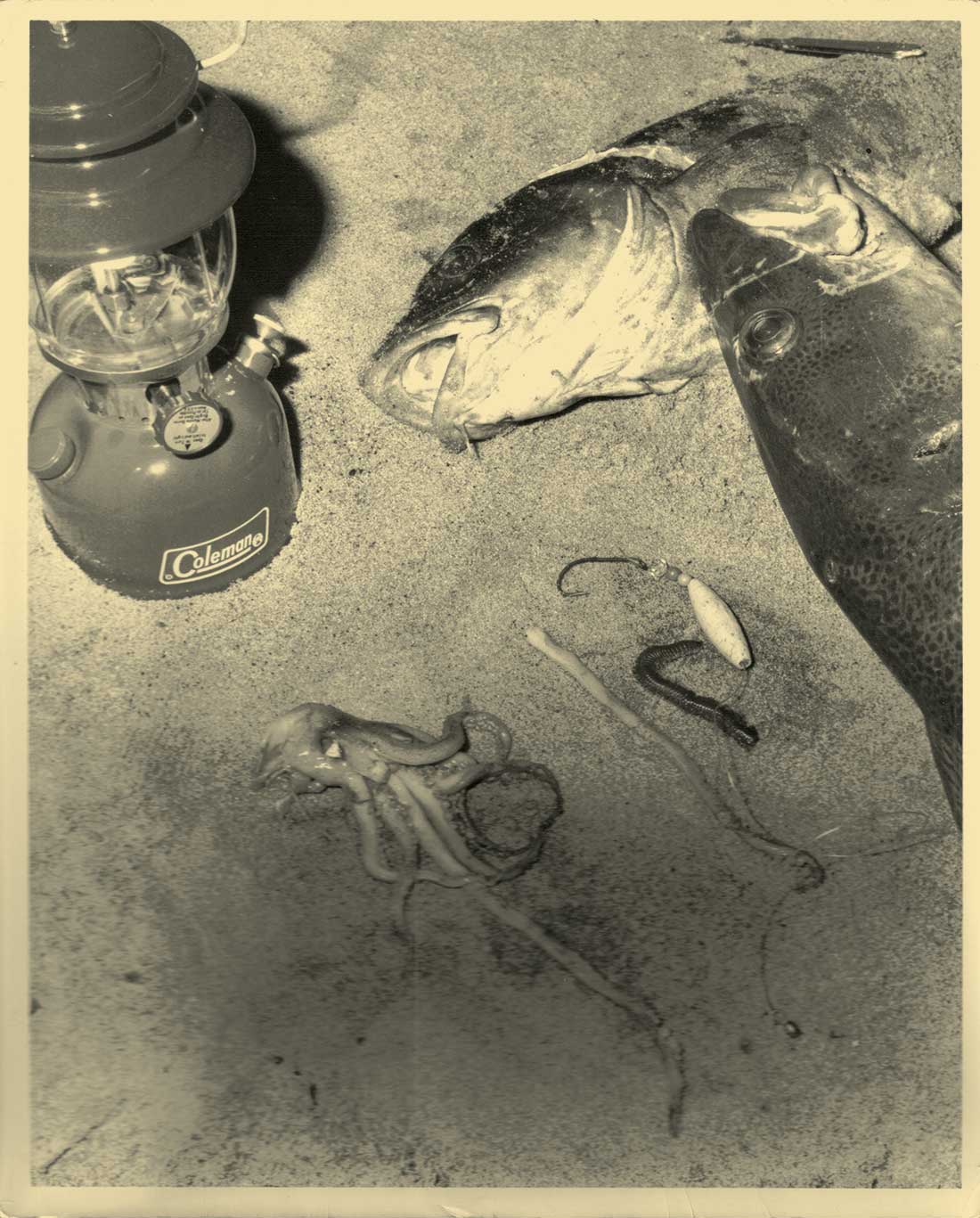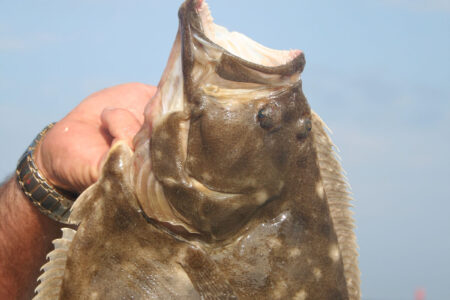
Here are some forgotten long shots that could still be there waiting to bend a rod; go looking.
Everyone knows about cod fishing off Block Island by boat, and drilling holes into your local lake for panfish, but there’s more to New England fishing in the cold, winter months than just these two options. Sure you could hop on a plane and fly south for some winter rod-bending, but sometimes half the fun in fishing is finding that long-forgotten or perhaps never-even-known fishery in your backyard; here are a few ideas to get your blood moving this “off-season.”
Sea-run Trout
All species of trout—browns, brookies, rainbows—are adaptable to life in saltwater. In coastal environments where access to the sea is not hindered by dams, these cold-water species will commonly seek refuge from overly-warm or low-oxygen situations by dropping down into tidewater. Northern Europe and the Canadian Maritimes are famous for supporting natural anadromous populations. Here in New England there remain some active sea-run fisheries such as Maine’s Royal River and a few small streams with natural trout populations. Your odds of

hooking-up increase as you travel north, but there are still small sea-run populations in all New England states.
Cape Cod once had a sea-run program but it was abandoned years ago. When active there had been a robust wild brook trout run every autumn in October and November. This coincided with the fall brown trout spawning run that was comprised of 8-inch stocked browns that grew at an unusual rate because of the favorable feeding opportunities in tidewater. While the program of sea-run browns has since been dropped, nothing was ever done to stop what was left there and spawning populations were left behind. The winter fishery of browns provided good angling with fish measured in pounds; one January I landed a 7-pound brown in tidewater Waquoit Bay, which is the headwaters of the Quashnet River.
Several small “rivers,” really tiny brooks, still provide access to tidewater: the Childs River, Coonamesset, Quashnet, Mashpee, and Santuet. Fish with a need to escape unfavorable conditions can, and do, drop down to oxygen-rich brackish bays. The Sandwich Trout Hatchery, which raises thousands of trout for Cape stocking, commonly tosses sick or substandard trout of all species into the nearby Scorton Creek, which seem to do well once they get a salt bath. The aforementioned small rivers all run from commonly stocked Cape ponds like Johns, Mashpee-Wakeby, Lovells, which are stocked all winter. This gives the trout angler, who might find sea-runs a bit of a long shot, more reliable options.
White Perch

White perch is a sea-run species that spawns in late winter. If you can greet new arrivals, they take readily on both live baits and small artificials, and, they don’t travel alone. When you find them in their spawning rivers you will catch so many white perch that you will wish for more neighbors with whom to share. Perch fillets, especially if they have come from sea water, are a nice eating fish. Nonetheless, you need a lot of them because most are around 8 or 10 inches.
March is a big month for spawning white perch, but one year we found them in Rhode Island’s Gilbert Stuart Pond, headwaters to the Narrow River, in late February. Some anglers used tip-ups with mummies for bait; others of us jigged through a foot of ice with small jigs. It is among the best fishing I have ever had.
Another good spot for sea-run white perch is the headwaters of the Palmer River in Rehoboth, Massachusetts. At the time, I was catching them with light tackle with a piece of clam worm on the bottom in March. A danger with this fishery is that it is all or nothing. The pool on the Palmer River would be lined with perch one day, then nothing the next. It can be hit or miss. I know there are lots of rivers between Fall River and Providence that host white perch runs but I don’t know everything.
Cod From the Beach
Regulations for cod fishing above the Cape are tighter than those west of Monomoy. This implies that there are more cod off the Rhode Island shore than off Boston. Consequently, this section is limited to Rhody beaches where the law allows you to keep a few. They have to be there; why would it change?
Having learned of the cod through our striper fishing, our first beach cod were an accident. Anxious to fish for early stripers, one year we went to Matunuck in early April. While fishing bottom for schoolies on a cold night, we caught a decent cod around 10 pounds. Friends from our striper club told us about catching cod all winter with bottom baits. On warmer nights in March, a month before our Matunuck schoolies, we had begun cod fishing and doing well. I’m not sure how it is now but it was then a reliable fishery. At the time we had been bottom fishing with meat, but quite by accident, we found a bunch of regulars drifting plugs from one of the Rhody breachways catching them in March; we saw one that was 35 pounds. We had been bottom fishing but the plug thing was a new development.

Having suitable baits at this time of year can be a problem because most of the tackle shops are closed, and the sea worms that work well are not even being dug in Maine where they originate. Skimmer clams are very good, and when toughened with an extended Kosher soak, stay on the hook nicely. That said, who thinks to put some away during warmer weather? The best, and probably only option, is squid, which you are likely to acquire from a seafood store. You might also be innovative and find something in the food stores that you could chunk on the bottom. This is a long shot but worth trying.
Here are some guidelines for beach cod in Rhode Island: fish nights, acquire bait, use a buggy for warmth, March is the best month.
EDITOR’S NOTE: For more on winter cod fishing from shore, be sure to check out “Behind the Cod Story” by Frank Daignault, available online.
Secret Trout
Anybody can catch stocked trout in a state pond; where the real challenge is finding a place to park. I want you to find trout nobody would even think to look for in places where they are not expected. When we lived a block from the Blackstone River, our four children used to go downtown and fish under a dam of the wildly-polluted Blackstone River where no jurisdiction would ever dream of putting trout. Alone, and with the imaginative optimism that children can often be known for, those kids caught more and bigger trout than you can imagine. This unstocked and polluted river was gathering trout that had been stocked up-stream in two states; they got away and headed downstream under an oxygen-rich waterfall. One more example and I’ll let you get back to fly tying.
I know a stream that is stocked in Rhode Island, then blocked with a screen to keep the trout in their home state. Over the years the screen has been blocked by leaves, which have diverted flow around the screen permitting Rhode Island trout to swim into Massachusetts where nobody fishes because Mass doesn’t stock it and Rhody guys can’t.


